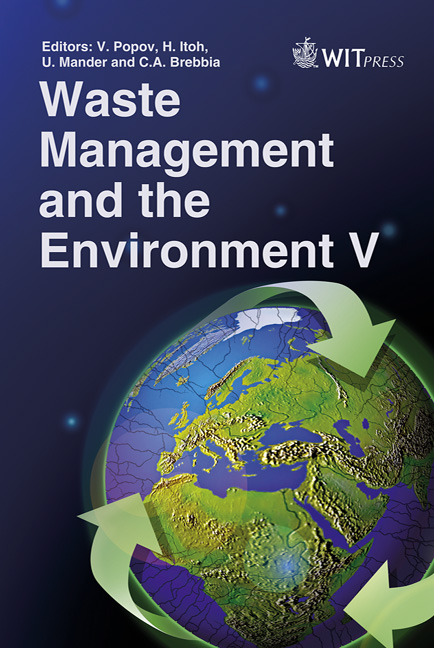Experimental Study On Utilizing Iron Slag To Stabilize Cr(VI)-contaminated Soils
Price
Free (open access)
Transaction
Volume
140
Pages
11
Page Range
337 - 347
Published
2010
Size
597 kb
Paper DOI
10.2495/WM100301
Copyright
WIT Press
Author(s)
O. A. B. Hassan
Abstract
A laboratory study is conducted to test the capacity of two types of iron slag to stabilize Cr(VI)-contaminated soils. The slag samples are incorporated with soils in different proportions and the resulting leachate is tested using batch experiments. The feasibility of using iron is demonstrated as concentrations up to 1000 mg Cr(VI)/kg in the leachate of an alkaline soil are reduced to 0,7 mg Cr(VI)/kg mix after 12 days, but to less than 5 mg Cr(VI)/kg mix after 7 days. Small particles size and L/S-ratio are, in most cases, favoured by the reducing agents to stabilize the contaminated soil. The study demonstrated that the iron slag can effectively stabilize Cr(VI)-contaminated soils. Keywords: environmental pollution, iron slag, Cr(VI), soil stabilization, reduction agents, leaching test, batch experiments. 1 Introduction The pollution of soils caused by harmful heavy metals has led to new problems related to the sustainability of the ecosystem. In addition to its environmental effects, chemically-polluted soils can create technical problems associated with industry and the building sector, unless they are stabilized and remediated by one method or another. Chromium is one of the heavy metals that constitute one of the major causes of soil and water pollution. In a broader sense, chromium has both beneficial and detrimental properties. The benefit of Cr is in its necessity for human nutrition (especially in glucose metabolism). The typical adult intake of Cr is less than 0.2 mg/day [1]. The detriment of Cr is in its toxicity. Most of the hexavalent chromium Cr(VI) compounds are toxic and are classified as carcinogenic and mutagenic to both
Keywords
environmental pollution, iron slag, Cr(VI), soil stabilization, reduction agents, leaching test, batch experiments





